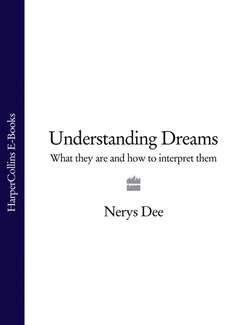Читать книгу Understanding Dreams: What they are and how to interpret them - Nerys Dee - Страница 23
brain waves and the dreaming mind
ОглавлениеFalling asleep follows lying down and relaxing the body, then the mind. Once asleep, the heart and breathing rate slows down, blood pressure is lowered and the body temperature drops slightly. The exact moment of going off to sleep is impossible to determine, even with the help of an electroencephalogram. The difference between being awake and being asleep is loss of conscious awareness. An external noise, for example asking a question, does not evoke a response.
Dream laboratories may not discover the reason for sleep or even what it is but, nonetheless, investigations have revealed some very interesting discoveries. Using computer language some researchers, comparing the brain with a computer, say we are ‘off-line’ during sleep. This means that the brain, like some computers, is not idle or resting but is reassessing, filing and up-dating the day’s input. This would certainly seem to be the case, but it is taking the analogy too far when it is said that the brain, like the computer, jettisons all out-of-date data in the form of meaningless dreams. Since dreams are memories, no memory can be totally eradicated, so the jettison theory is too mechanical and simplistic. According to this reasoning our dreams are mere sittings worth nothing more than the rubbish bin. Such a notion, in the light of inventive, creative, prophetic and lucid dreaming, is nonsense.
To understand sleep we need to understand the brain. It was found earlier this century that the brain gives off electrical impulses and by the 1920s scientists could measure two different types of waves which they called Alpha and Beta. Later, as electrical devices improved, Delta, Theta, Mu, Gamma, Vertex, Spike and K waves have been found as well. To obtain these readings, electrodes are attached to various areas on the head and impulses are intensified and transformed into wave motions on graphs or into electroencephalograms on computer screens – EECs for short.
Interpreting what these waves mean is far from clear, and individual researchers each had their own names for them: ‘deep and light phases’; ‘active and quiet phases’; ‘desynchronised and synchronised phases’; ‘high and low phases’, and finally ‘paradoxical and orthodox phases’ were terms used to describe dreaming and non-dreaming brain waves.
